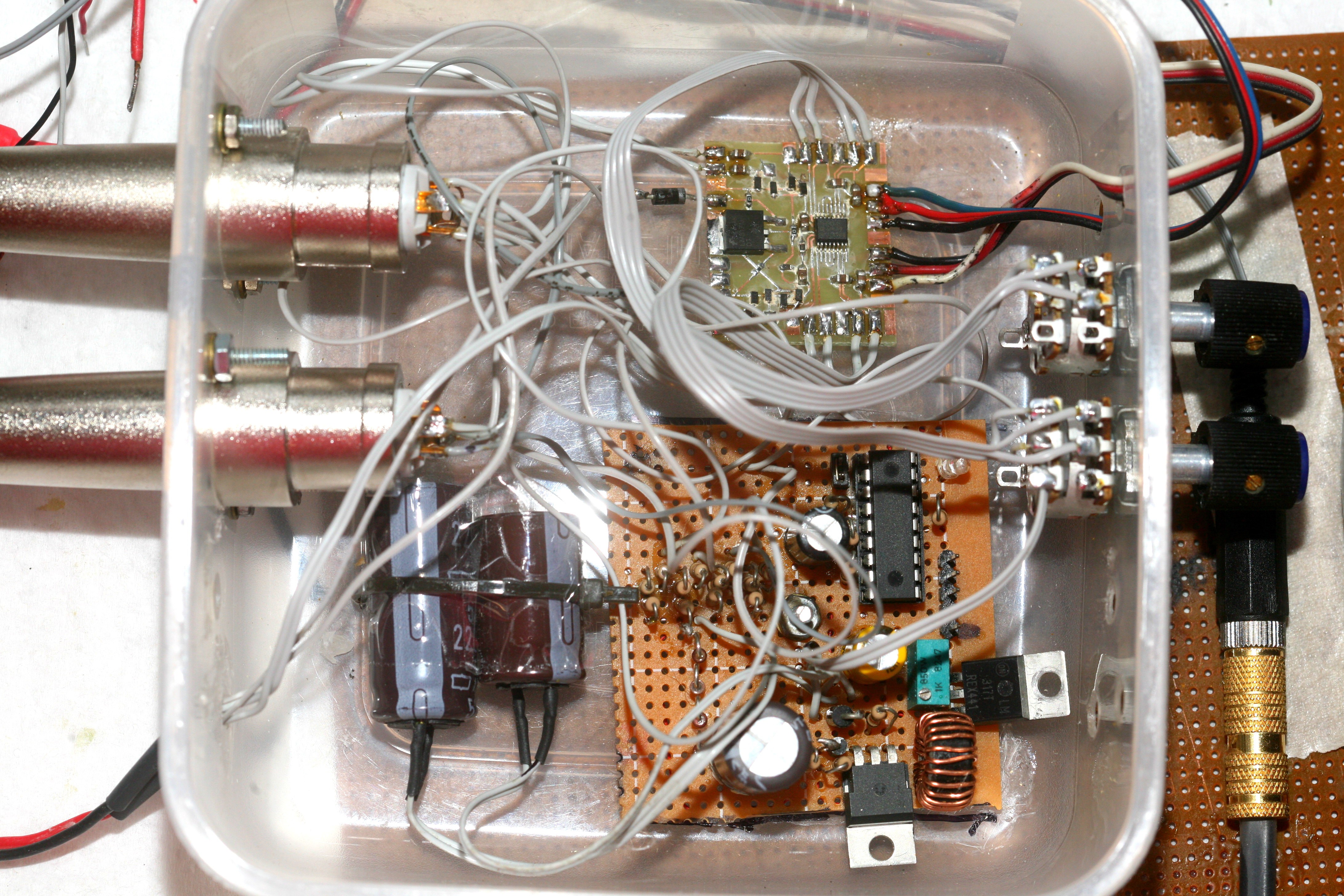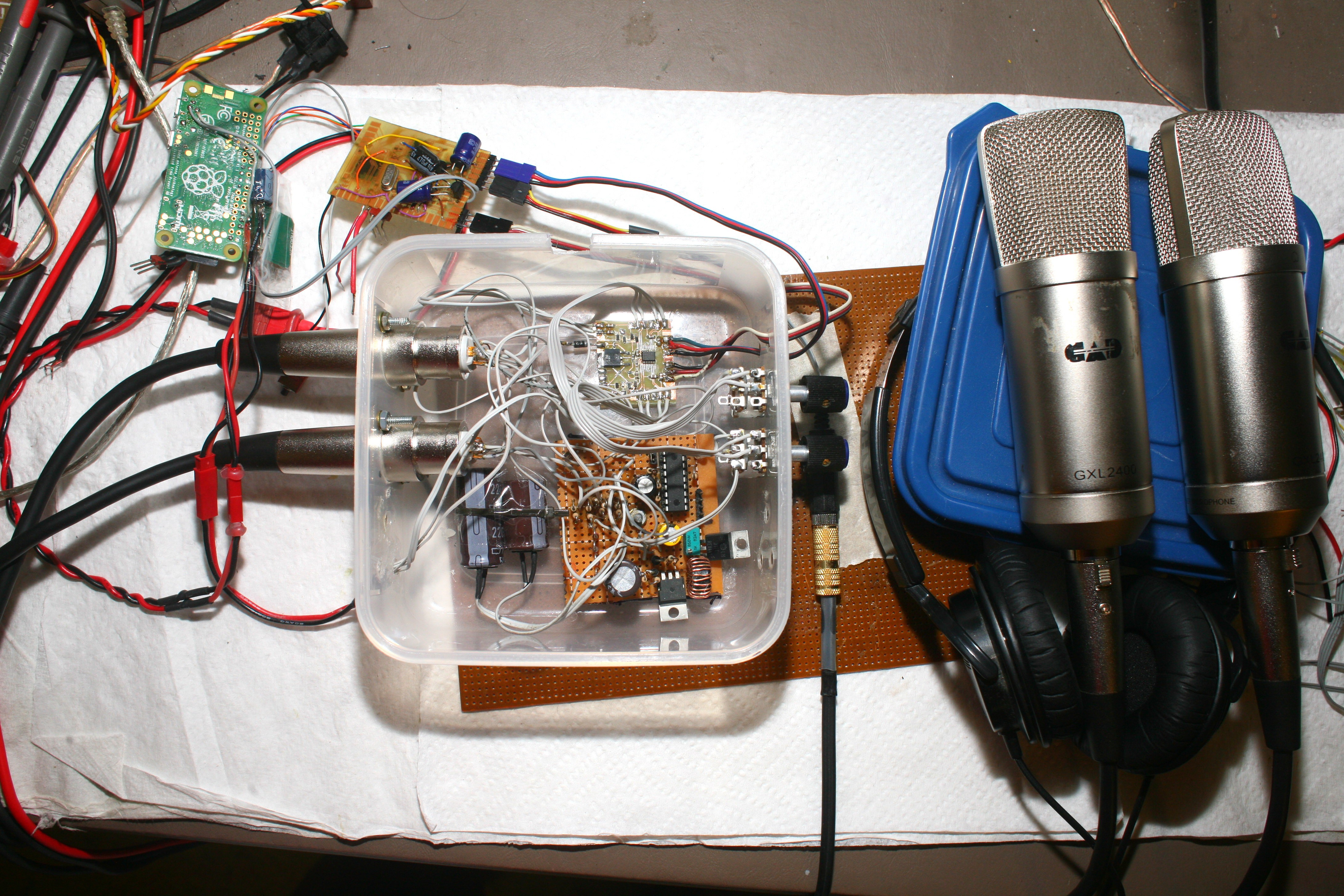
Kept what was there from 7 years ago. Made the amplifier section output differential signals. Of course, there are sections where the pairs aren't close together & this is where the RF gets in. At least it worked as designed. Considering the preamp, a Zoom H6 would be smaller & easier to use.

A few more software bug fixes & it finally captured microphones with the monitoring working perfectly in both channels. Another change made the MANE volume control all the mane/I2S3 levels & the AUX volume control all the aux/I2S2 levels. It now requires both faders to adjust a stereo volume, but it's more intuitive. Also, the 2 channel mode using ADCs as differential pairs (L+/- R+/-) now has to write a separate file for each channel. A bit more effort could make every mode write a single file, but it's hardly ever going to be used.
Like the Zoom H2, the ADC board has no input protection. To protect it from 48V pops, the preamp has spudger diodes. The TLV320AIC32 in the Zoom simply blew up when plugged into phantom power.
The output of the ADC is a bit quieter than it was on the Zoom, because of the larger voltage range. The preamp already does 100x. The ADC can provide additional gain, but it has to be a GUI option.
The real problems show up in the L/L R/R mode. Here, the differential pairs subtract away the microphone signal & sum the RF. The RF is highly suppressed in the +/- modes, but still there. The RF getting into the preamp is awful. It's probably why others put thousands of parts into their preamps & pilot lights in their JFETs.
 lion mclionhead
lion mclionhead
Discussions
Become a Hackaday.io Member
Create an account to leave a comment. Already have an account? Log In.